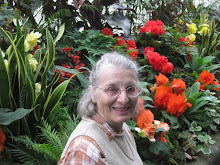Doubtful Sound. Doesn't that sound like it should be a rock group? Not so, read on.
Recently we visited Fiordland National Park, a World Heritage Site, on the southwest coast of South Island. I booked an all day cruise of Doubtful Sound and a tour of the power station, a destination of pride for Kiwis. In Te Anau (pronounced tee-annau), the gateway to Fiordland, we stayed at a B&B. Other than the good cooked breakfasts and the pleasant hosts in Merle and Cliff (an international rowing umpire), The Wood House was a mixed experience. We got the last vacancy which was our own separate bungalow a block away from the main house (and breakfast). Unfortunately it was a cold, wet weekend and the only source of heat in the bungalow was a space heater which did not do the job. On the plus side, it was very quiet.
By boat, we crossed Lake Manapouri. Then we climbed on a large 35 passenger coach to take us from the landing on Lake Manapouri through Wilmot Pass to the jetty at Deep Cove. We drove through a mountainous rain forest gushing rain-charged waterfalls every few kilometres.

At the other end of the road, we boarded the ship for the 3-hour cruise down Doubtful Sound to the Tasman Sea. Doubtful Sound is a true fiord with high mountains rising straight up from well below the water's surface. The storied Captain Cook, first European to sail past the mouth of the fiord, is responsible for the name. The scientist on board his ship wanted to sail up the fiord to collect specimens. Cook, fearing there would be no wind inland to take the sailing ship out once they were in, refused to enter. The notation he made on the map by the mouth of the fiord was "Doubtful harbour". In terms of the definition of a sound as a body of water, this was misnamed.
 The rainfall in parts of this area is as much as eight metres per year so we anticipated a wet journey and were not disappointed. It rained the entire way. With the blue mountains as background, the overcast sky, and dark water the horizon was a study in shades of gray in contrast to the green of the flora covering the sides of the mountains.
The rainfall in parts of this area is as much as eight metres per year so we anticipated a wet journey and were not disappointed. It rained the entire way. With the blue mountains as background, the overcast sky, and dark water the horizon was a study in shades of gray in contrast to the green of the flora covering the sides of the mountains.The rata trees in misty red blossom punctuated the green at intervals.

As we approached the Tasman Sea, the ship responded to the ocean swell with increased motion. Beyond the mouth of the fiord, a large rock provides a home for New Zealand fur seals.
Even more impressive was the pod of bottle nose dolphins who performed a fishy ballet, throwing their bodies into the air as they followed the ship.

In one of the arms of the fiord, the Captain stopped the engines as the narrator advised us to listen. We heard the patter of rain and ... nothing else. One is deep into the wilderness on this body of water. The moment was meditative and the Kiwi Consort thought it was the best part of the trip.
Cheers,
Kiwi Traveler







No comments:
Post a Comment